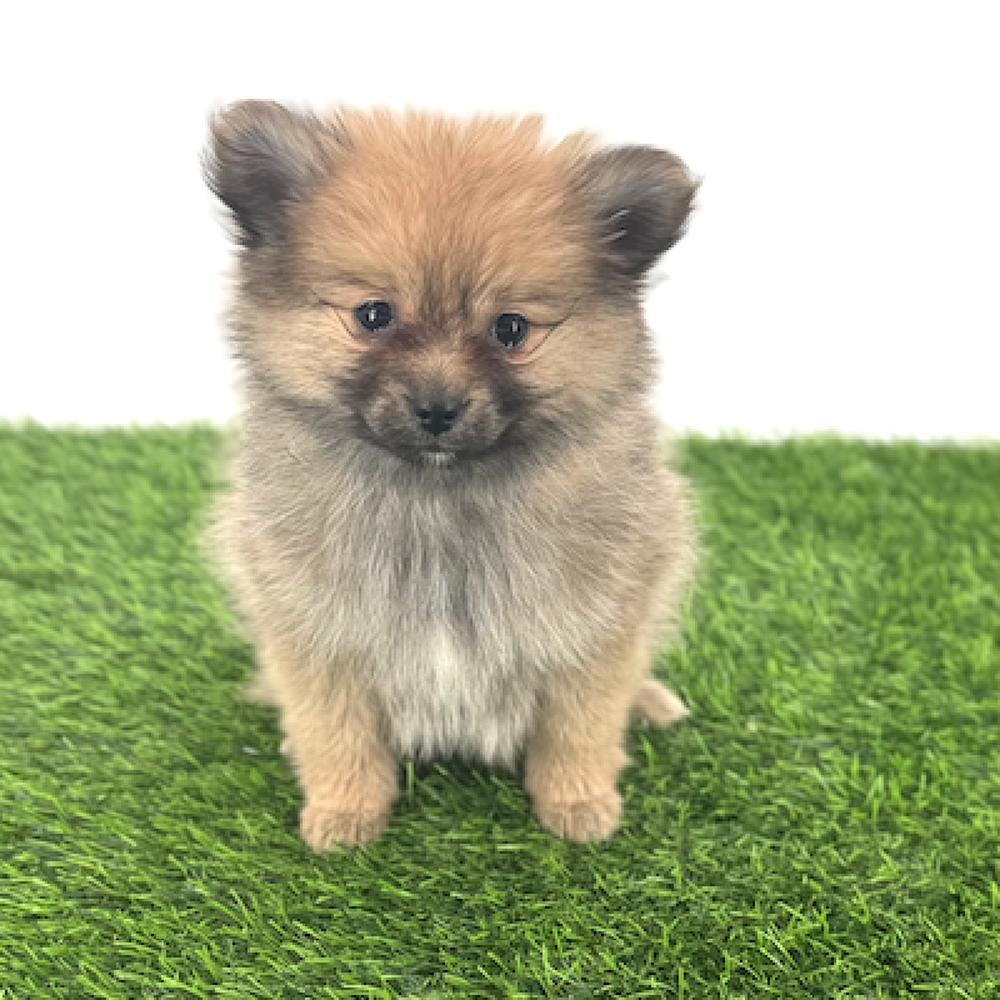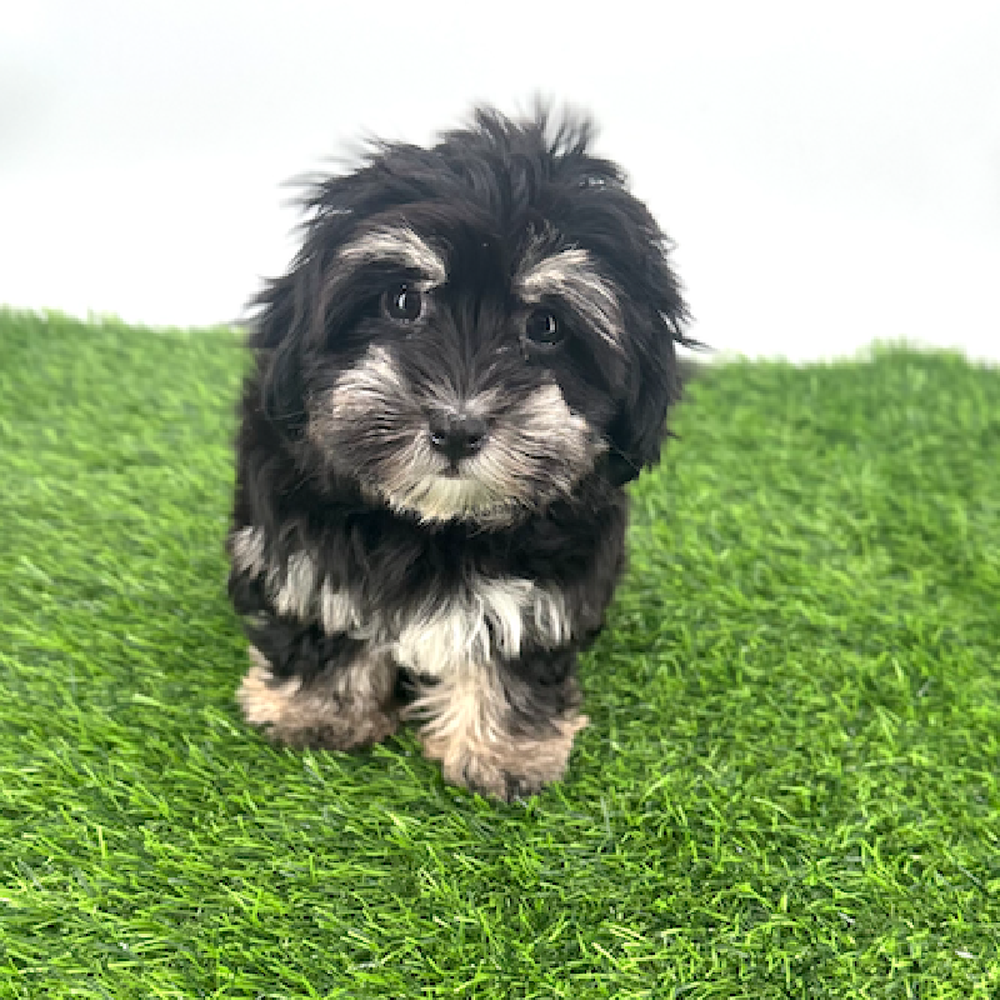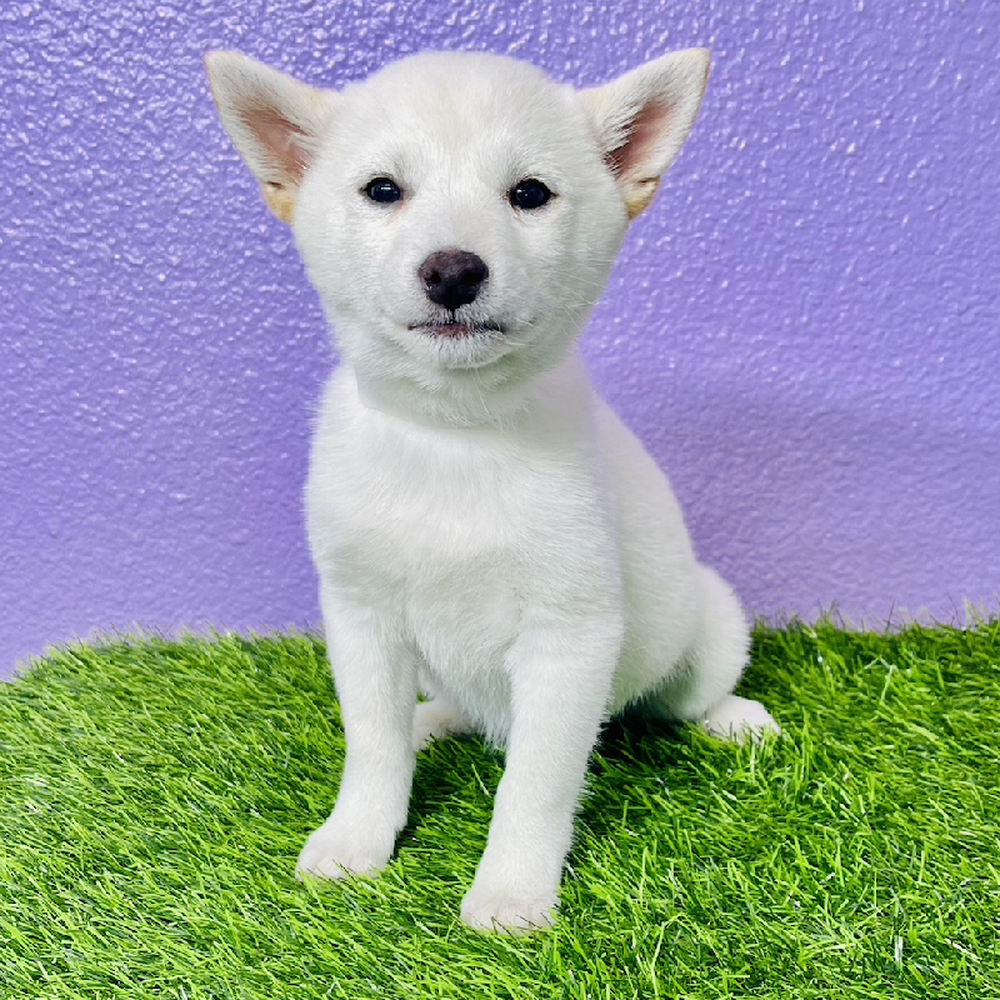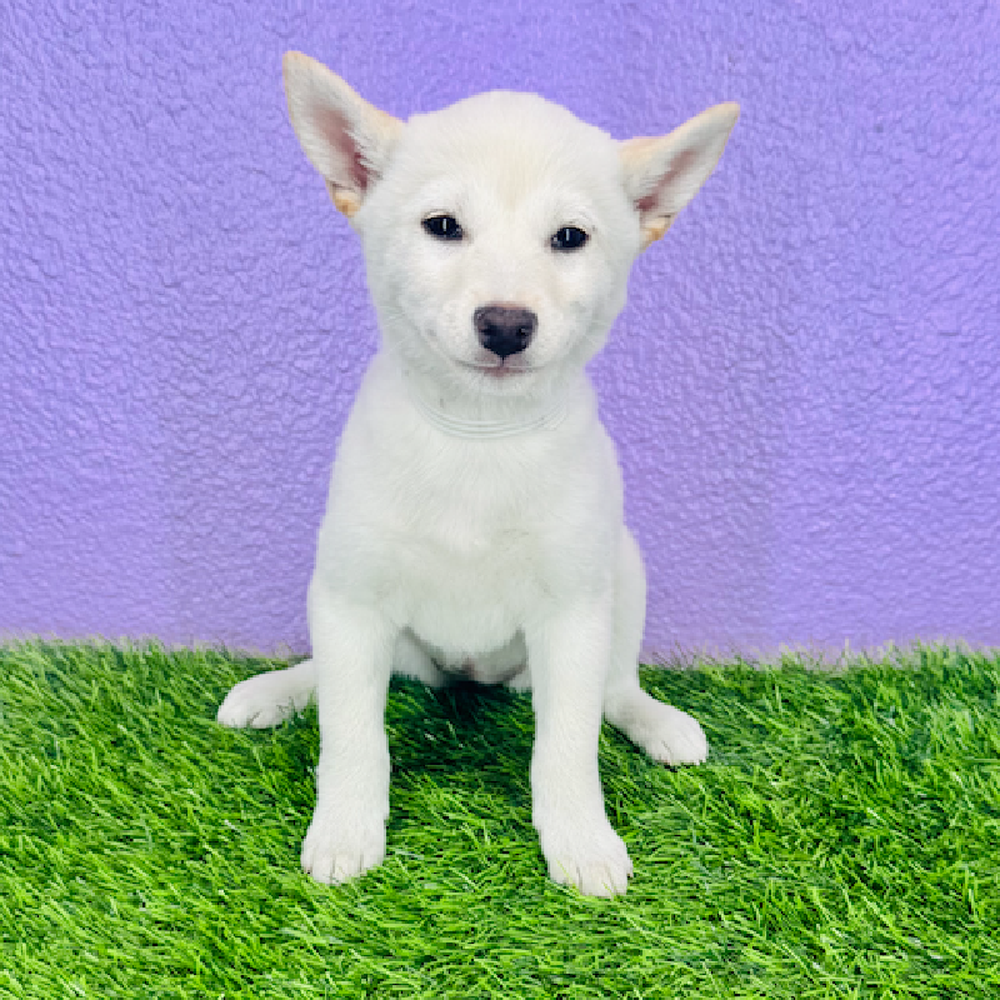English Toy Spaniel
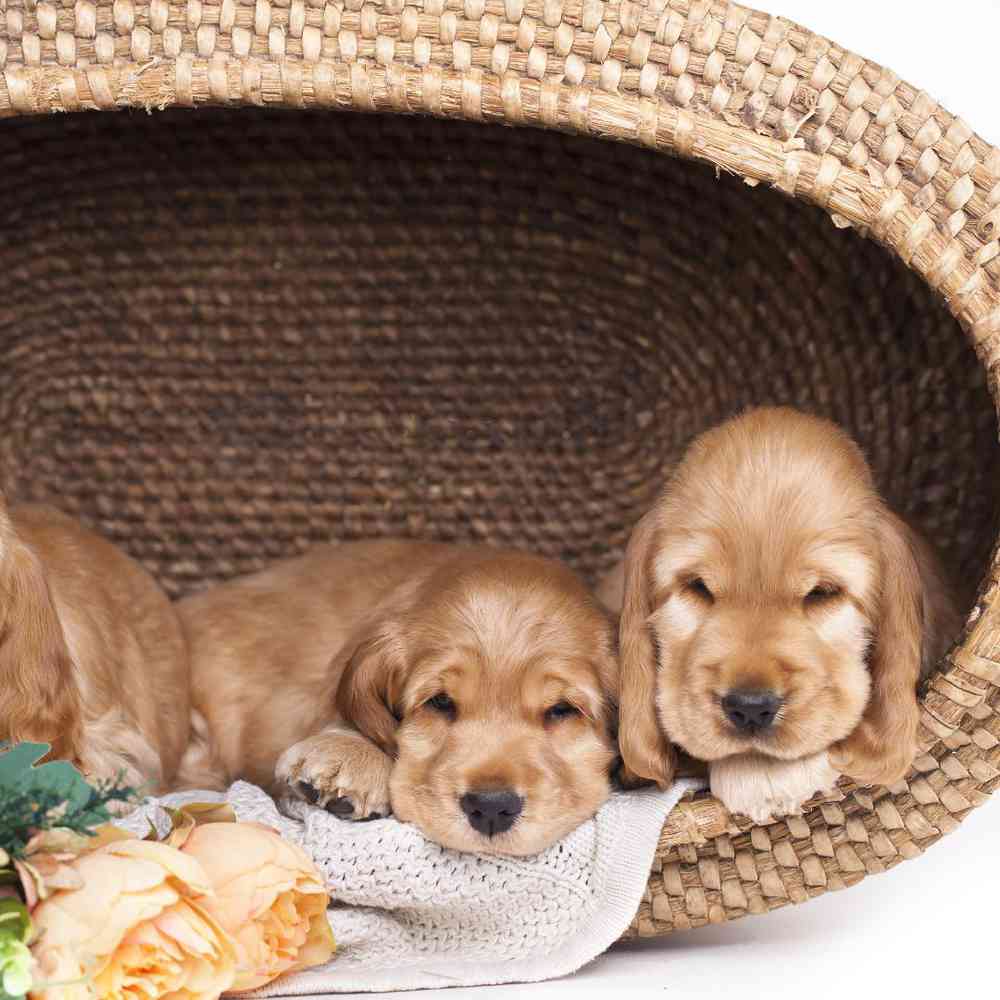
AKC Registrable
English Toy Spaniel
The merry English Toy Spaniel was bred to be the companion of kings. But ETS are spaniels first and pampered lapdogs second, and beneath the patrician exterior beats the heart of a real doggy dog—bright, loving, and willing to please.
Available Puppies
All our Pets have found their homes. Please enter your contact information below so we can get in touch with you when we have found the perfect Pets for your family.
Breed Standard
General Appearance
The English Toy Spaniel is a compact, cobby and essentially square toy dog possessed of a short-nosed, domed head, a merry and affectionate demeanor and a silky, flowing coat. His compact, sturdy body and charming temperament, together with his rounded head, lustrous dark eye, and well cushioned face, proclaim him a dog of distinction and character. The important characteristics of the breed are exemplified by the head.
Size, Proportion, Substance
The most desirable weight of an adult is eight to fourteen pounds. General symmetry and substance are more important than the actual weight; however, all other things being equal, the smaller sized dog is to be preferred. Proportion - Compact and essentially square in shape, built on cobby lines. Substance - Sturdy of frame, solidly constructed.
Head
Head large in comparison to size, with a plush, chubby look, albeit with a degree of refinement which prevents it from being coarse. Expression - Soft and appealing, indicating an intelligent nature. Eyes - Large and very dark brown or black, set squarely on line with the nose, with little or no white showing. The eye rims should be black. Ears - Very long and set low and close to the head, fringed with heavy feathering. Skull - High and well domed; from the side, curves as far out over the eyes as possible. Stop - Deep and well-defined. Muzzle - Very short, with the nose well laid back and with well developed cushioning under the eyes. Jaw - Square, broad, and deep, and well turned up, with lips properly meeting to give a finished appearance. Nose - Large and jet black in color, with large, wide open nostrils. Bite - Slightly undershot; teeth not to show. A wry mouth should be penalized; a hanging tongue is extremely objectionable.
Neck, Topline, Body
Neck - Moderate in length; nicely arched. Topline - Level. Body - Short, compact, square and deep, on cobby lines, with a broad back. Sturdy of frame, with good rib and deep brisket. Tail: The tail is docked to two to four inches in length and carried at or just slightly above the level of the back. The set of the tail is at the back's level. Many are born with a shorter or screw tail which is acceptable. The feather on the tail should be silky and from three to four inches in length, constituting a marked "flag" of a square shape. The tail and its carriage is an index of the breed's attitude and character.
Forequarters
Shoulders well laid back; legs well boned and strong, dropping straight down from the elbow; strong in pastern. Feet, front and rear, are neat and compact; fused toes are often seen and are acceptable.
Hindquarters
Rear legs are well muscled and nicely angulated to indicate strength, and parallel of hock.
Coat
Profusely coated, heavy fringing on the ears, body, and on the chest, and with flowing feathering on both the front and hind legs, and feathering on the feet. The coat is straight or only slightly wavy, with a silken, glossy texture. Although the Blenheim and the Ruby rarely gain the length of coat and ears of the Prince Charles and King Charles, good coats and long ear fringes are a desired and prized attribute. Over-trimming of the body, feet or tail fringings should be penalized.
Color
The Blenheim (red and white) consists of a pearly white ground with deep red or chestnut markings evenly distributed in large patches. The ears and the cheeks are red, with a blaze of white extending from the nose up the forehead and ending between the ears in a crescentic curve. It is preferable that there be red markings around both eyes. The Blenheim often carries a thumb mark or "Blenheim Spot" placed on the top and the center of the skull. The Prince Charles (tricolor) consists of a pearly white ground, with evenly distributed black patches, solid black ears and black face markings. It is preferable that there be black markings around both eyes. The tan markings are of a rich color, and on the face, over the eyes, in the lining of the ears, and under the tail. The King Charles (black and tan) is a rich, glossy black with bright mahogany tan markings appearing on the cheeks, lining of the ears, over the eyes, on the legs and underneath the tail. The presence of a small white chest patch about the size of a quarter, or a few white hairs on the chest of a King Charles Spaniel are not to be penalized; other white markings are an extremely serious fault. The Ruby is a self-colored, rich mahogany red. The presence of a small white chest patch about the size of a quarter, or a few white hairs on the chest of a Ruby Spaniel are not to be penalized. Other white markings are an extremely serious fault.
Gait
Elegant with good reach in the front, and sound, driving rear action. The gait as a whole is free and lively, evidencing stable character and correct construction. In profile, the movement exhibits a good length of stride, and viewed from front and rear it is straight and true, resulting from straight-boned fronts and properly made and muscled hindquarters.
Temperament
Gentle, Playful, Intelligent
Overview
Group
Toy
About
The ETS is a square, snub-nosed toy weighing no more than 14 pounds. The large domed head—with its long and lush ears, dark melting eyes, and chubby cheeks—is a famous breed trait. The profuse coat comes in four varieties, each with its own proper name: red and white (Blenheim); black and tan (King Charles); white, black, and tan (Prince Charles); and a solid red (Ruby). Blenheims often have a red mark, the “Blenheim Spot,” on top of the head. The ETS, like many toy breeds kept by royals, came to assume the personalities of their aristocratic owners. They can be proud and willful, and extremely discriminating in their choice of friends. With their favored humans, they are affectionate at home and exuberant and curious at play.
History
Toy spaniels are famously associated with Britain’s Charles I and II, the “Merry Monarchs” of the 1600s, whose sporty little dogs became symbols of the House of Stuart. In the time of Charles II, perhaps Britain’s most dog-happy monarch before the reign of Victoria, it was decreed that toy spaniels be the only dogs allowed in the House of Parliament. The origins of Europe and Britain’s toy spaniels are a matter of conjecture. Some authorities maintain that miniature spaniels were brought to Europe from Japan or China in ancient times. Others say that toy spaniels were imported to Asia from Spain, thought to be the birthplace of the spaniel breeds, and that Asian breeders refined the dogs and exported their handiwork to England, Italy, and France. The fad dogs among the nobles of Renaissance England were toy-sized versions of their favorite sporting-spaniel types. In Shakespeare’s time, toy spaniels were known as “the “Spaniel Gentle,” or “the Comforter.” A toy spaniel accompanied Mary Queen of Scots to her beheading in 1587. By the time Charles II assumed the throne in 1665, toy spaniels were the mascots of several aristocratic houses of Britain. During the Victorian Era, British toys spaniels were crossed with Asian toys, probably Pugs and Japanese Chin, and became what is known in America as the English Toy Spaniel (or, in the United Kingdom, the King Charles Spaniel). This new-style toy spaniel had a domed skull and a flatter face than those of Charles’s time. Before long, the new type, the EST, came to dominate, and the traditional toy spaniel of the Restoration times was rendered nearly extinct. The old-style toy was revived in the 1920s and is today known by U.S. fanciers as the Cavalier King Charles Spaniel.
Standard
The English Toy Spaniel is a compact, cobby and essentially square toy dog possessed of a short-nosed, domed head, a merry and affectionate demeanor and a silky, flowing coat. His compact, sturdy body and charming temperament, together with his rounded head, lustrous dark eye, and well cushioned face, proclaim him a dog of distinction and character. The important characteristics of the breed are exemplified by the head.
Nutrition
The English Toy Spaniel should be fed a high-quality dog food appropriate to the dog’s age (puppy, adult, or senior) and ideally formulated for small or toy breeds. Some dogs are prone to getting overweight, so watch your dog’s calorie consumption and weight level. Treats can be an important aid in training, but giving too many can cause obesity. Give table scraps sparingly, if at all, especially avoiding cooked bones and foods with overly high fat content. Learn about which human foods are safe for dogs, and which are not. Check with your vet if you have any concerns about your dog’s weight or diet.
Grooming
The English Toy Spaniel’s long, wavy, silky, and profuse coat should be brushed at least twice a week with a pin brush or soft bristle brush. A long-toothed metal dog comb can also come in handy for gently working through areas where tangles may be beginning to form. Left unattended, tangles and mats are uncomfortable for your dog and can cause skin problems to develop. Regular trimming around the face, feet, and other areas can keep your English Toy Spaniel looking neat. The nails should be trimmed once a month, and a bath every four to six weeks with a gentle shampoo meant for dogs will help to keep the English Toy’s coat and skin clean and healthy. Grooming sessions are a good time to check the dog all over for any new lumps or skin problems, and to check that the eyes and ears are healthy and trouble free.
Exercise
English Toy Spaniels are moderately active—when outdoors exercising they are alert, playful, and energetic, while at home they are sedate and dignified. They are easygoing dogs who make excellent companions for city dwellers in small apartments who can provide the dogs with daily walks on lead. As a short-faced breed, the ETS is not tolerant of hot weather and should not be left outdoors on warm or humid days.
Training
The “Charlie,” as the breed is sometimes known, is quiet, happy, and devoted to his owners. He is forgiving in nature and physically fastidious. Although primarily a companion to owners desiring a merry, affectionate pet, the breed has retained traits of his sporting ancestors and is said to be a fine small hunting spaniel. They are smart but can be stubborn during training; patience, consistency, and a positive, gentle approach are keys to success. Harsh methods are never appropriate for this sensitive, trusting breed. Early socialization and puppy training classes are recommended and help to ensure that the Charlie grows into a well-adjusted, well-mannered companion.
Health
English Toy Spaniels are generally healthy dogs, but there are several health and genetic screening considerations specific to the breed, including eye conditions, cardiac disease, and luxating patellas. Dedicated breeders test their breeding stock and communicate with each other regularly to work together for breed health and preservation of the breed’s unique qualities. The English Toy Spaniel’s ears should be checked regularly for signs of infection, and the teeth should be brushed often, using a toothpaste designed for dogs. Regular visits to the vet for checkups and parasite control help to ensure the dog a long, healthy life.


